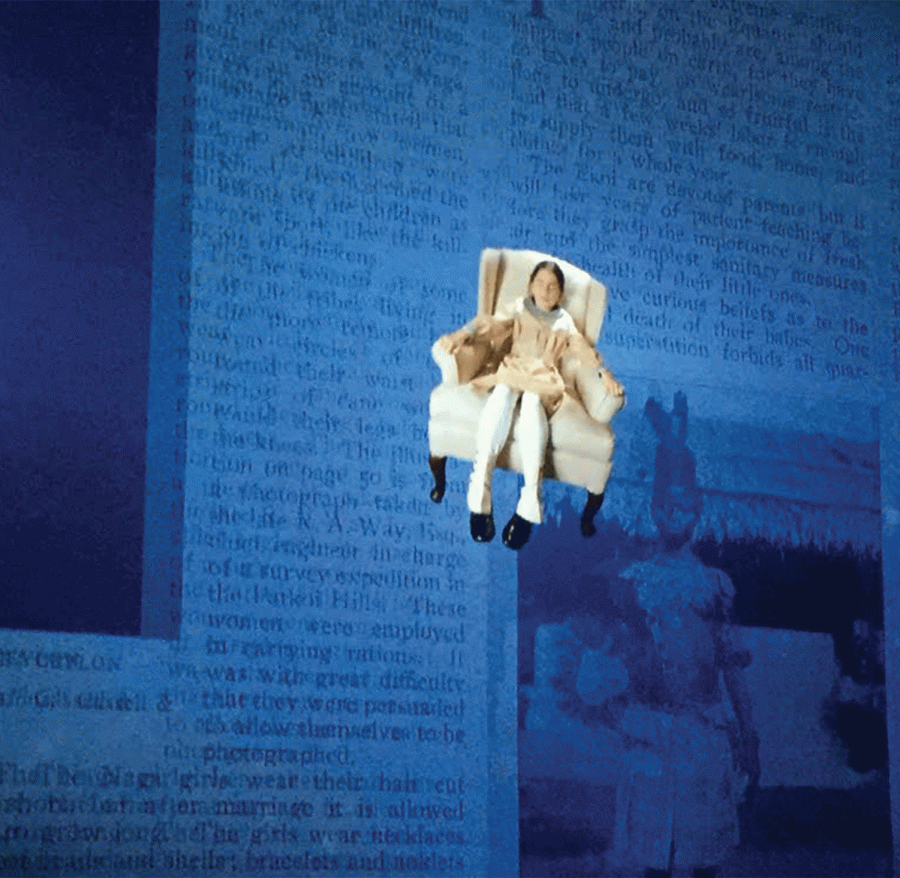Visual Adaptations of Elizabeth Bishop’s Work Explores Memory
This still from John Scott’s cinepoem, “The Waiting Room,” displays some of the stylistic choices of the director.
On the evening of February 2, filmmaker John Scott came to Colgate to speak to students, faculty and community members in Golden Auditorium about his new “cinepoems” covering the poet Elizabeth Bishop and her works. Mr. Scott is an Associate Professor of Media Arts at Ithaca College, a close upstate institution only 45 minutes away from Colgate. His cinepoems are basically visual adaptations of Bishop’s poems read aloud. They manifest themselves visually in Scott’s short films that included “First Death in Nova Scotia,” “Sandpiper,” “One Art” and “In The Waiting Room.” Mr. Scott told his audience that his cinepoems work to present memory as something that can reveal and obscure the truth.
Four of Scott’s films were screened that night. A particularly notable short film was “Sandpiper.” Scott explained to the audience the poem is believed to be Bishop’s attempt to describe her by comparing the behavior of the sandpiper bird to that of her own. The film depicted a bird running on the beach frantically past waves looking for something in the sand. Scott utilizes drawn animation to depict the sandpiper and also makes use of a very soothing alternation between fast and short cuts in this film. In a post-screening Q&A, Scott elaborated on his stylistic choices.
“‘Sandpiper’ reflects the behavior of Bishop in many ways. It highlights the chaos and serenity in her life as well as her frantic search for fulfillment,” Scott said.
“In The Waiting Room” was also very intriguing short film. Scott explained that this cinepoem explored Bishop’s feelings of difference, essentially her lesbianism. Bishop is seen falling into an alternate universe, where she feels more at home than the oppressive one of which she expecteded to be a part.
Junior Angel Maldonado, who attended the screening, enjoyed the poems and liked Scott’s filmmaking style.
“The idea of a cinepoem was one I’ve never heard of and I admit that it is
definitely a very hard one to execute,” Maldonado said.
Junior Kris Pfister also liked Scott’s execution of a difficult and somewhat novel concept of combining a poem and film into one.
“I liked the approach he was taking. I also think that it was difficult to combine these two forms of media that aren’t typically combined,” Pfister said.
While there was a fair share of positive responses to Scott’s cinepoems, many
believed his style to be rudimentary and not very cohesive. There were a few members of the audience who openly admitted their dislike for Scott’s work. Scott emphasized the fact that these particular works were not yet complete and would be streamlined together into a single film with a narrative structure and timeline. Nonetheless, the majority seemed excited by Scott’s revolutionary idea of a cinepoem.
This lecture and screening was a part of the semester-long “Alternative Cinema Screenings.” These screenings cover a wide range of experimental and avant-garde film that strays from the mainstream and are are organized by Visiting Professor of Art and Art History Mary Helena Clark and Assistant Professor of Art and Art History Wenhua Shi. The Alternative Cinema Screenings occur every Tuesday at 7 p.m. Next week’s Alternative Cinema screening will feature filmmaker Tomonari Nishikawa in person, accompanied by screenings of his short films that document the artistic process.




